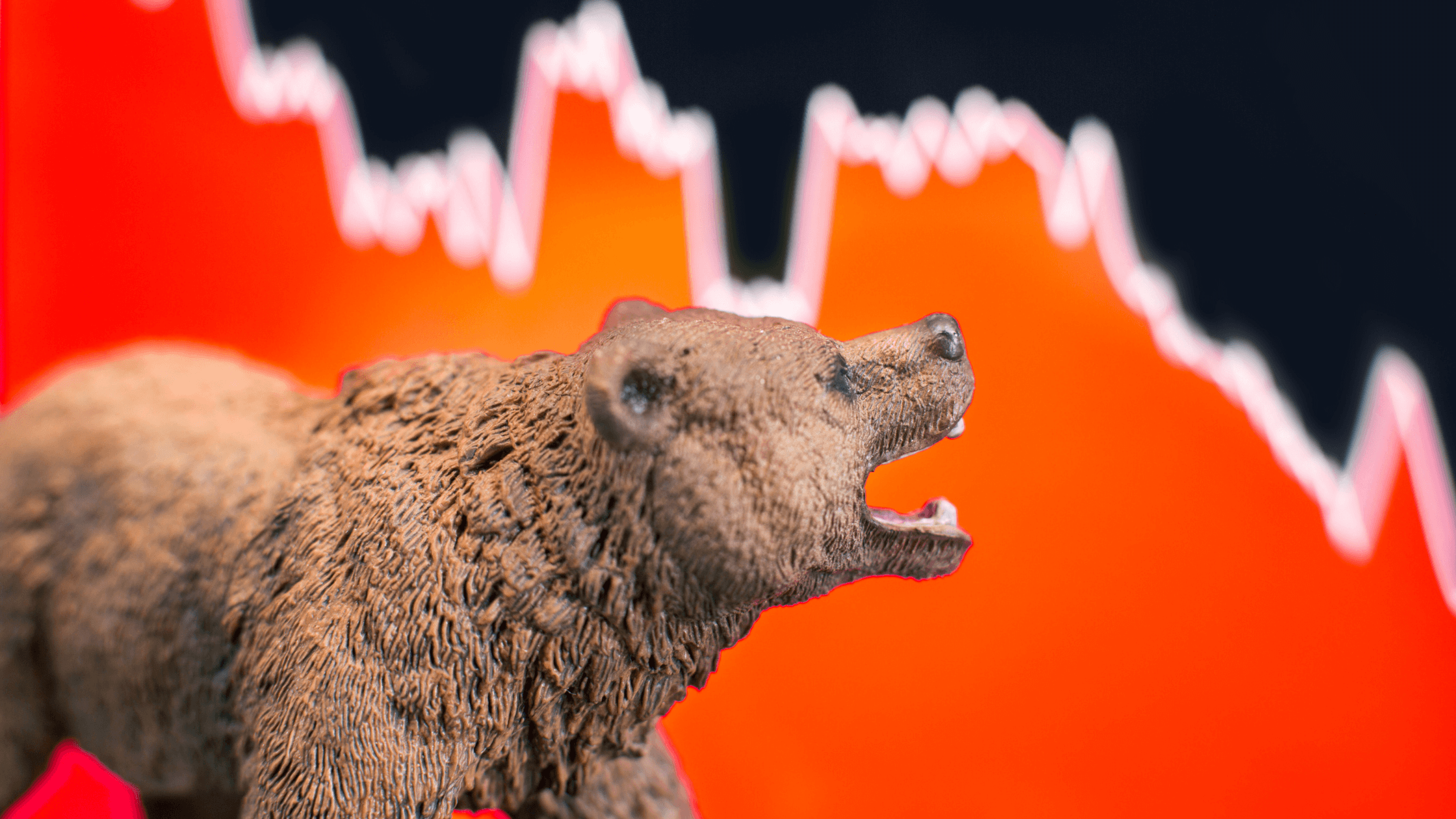China Stocks: Breaking Down the Crackdown for Investors
August 5, 2021

It’s perhaps an understatement to say that the past few weeks for investors in China’s stocks has been “stomach-churning”.
Steep sell-offs in Chinese tech stocks, sparked by a clampdown on private education firms in China, saw about US$1 trillion in market value evaporate in a week.
Trauma from the market’s declines has left a lot of individuals pondering whether they still want to buy China stocks at all.
However, beyond the hyperbole in the press on China’s government tightening its grip on private sector firms, there’s actually a lot of nuance for investors to digest.
Put simply, investors are going to have accept a higher degree of political risk when investing in China going forward. That much is blindingly clear.
Yet given the combined size of various Chinese stock markets, the asset class can’t be ignored.
Last week, my colleague Say Boon Lim wrote a very insightful piece that cut through a lot of the “noise” surrounding the clampdown.
Here, I’ll take a look at how investors should assess the impact – through a lens that takes into account three distinct layers of the Chinese government’s priorities in relation to regulation.
1. Sector specific
The origins of the latest market sell-off of Chinese stocks can be found in the highly controversial private education industry in the country.
As investors, we should be cognisant of the fact that the latest move to forbid private education firms, that teach school curriculums, are centred on that particular market niche.
Intense pressure on children, and the gaokao (高考) exam system in China, has resulted in the proliferation of private tutoring centres aimed at giving kids an edge in school entrance exams.
It’s metastasized into an expensive, and necessary, overhead for parents – much to the chagrin of authorities in China.
Having attracted significant amounts of capital over the years, the likes of TAL Education Group (NYSE: TAL) and New Oriential Education & Technology Group (NYSE: EDU) (SEHK: 9901) had actually been under scrutiny since late last year.
Socially poisonous
Consumer backlash against the private tutoring industry in China had ballooned in 2020 as the country went into lockdown and the sector saw a surge in demand.
The country’s National Consumers’ Association revealed in October 2020 that it had received nearly 220,000 consumer complaints in the third quarter of the year alone.
Share prices were already on their way down in 2021. Even before the carnage of the past few weeks, TAL’s stock price had been cut by 70% while New Oriental had seen its shares decline by 62%.
That was in reaction to signs of tightening regulation. In mid-June of this year, China’s Ministry of Education created a new division (the Off-Campus Education and Training Department) specifically to oversee private tutoring.
All this fits the narrative of how the government most recently described the sector as “hijacked by capital”.
Viewing this specific crackdown as solely aimed at the private education industry goes some way in illustrating why many names operating in the sector lost 60-80% of their value overnight.
Meanwhile, the broader technology sector in China “only” saw a 10-20% sell-off.
In that market reaction, there was real differentiation between companies’ business models that are effectively obsolete versus the broader market – where more regulation for private firms is nearly certain but will likely not be life-threatening.
That brings us neatly to the second point, which is how this crackdown can be viewed in the context of broader market reforms.
2. Fairer, more competitive markets
Second, the spate of recent regulatory action against the tech platform giants in China is well known. One of the big starting points was when Ant Group’s IPO was spectacularly scuttled by regulators last year.
Then, at the start of July, shortly after ride-hailing firm Didi Global Inc (NYSE: DIDI) went public in New York, China’s Cyberspace Administration of China (CAC) launched a cybersecurity review into Didi – sparking a massive sell-off.
Things have only gotten worse for China’s tech giants. Online food delivery firm Meituan Dianping (SEHK: 3690) is in hot water for anti-competitive practices, such as forced exclusivity arrangements with merchants.
Meituan Dianping’s own sell-off was accelerated in recent weeks as regulations were announced that ensure food delivery drivers receive the local minimum wage.
Meituan shares are down by 27% so far in 2021 while Tencent Holdings Ltd (SEHK: 700) is down 18% and Alibaba’s Hong Kong-listed shares have shed about 16%.
So, what does this tell investors? Back in 2017, The Economist published an article stating that:
“The world’s most valuable resource is no longer oil, but data”.
For tech giants in the US, that has been true. More so for the Chinese tech platform giants, who have benefitted substantially from an even more abundant flow of data from their hundreds of millions of users.
Control over data
Access to this much data, though, has also been seen as a form of unconstrained power by Chinese authorities. For the party, control of this data is a priority given the way they’re used by tech platform operators.
Didi was a prime example of this. It has sensitive records on trip data for hundreds of millions of users, including high-ranking government officials, with a market share in China for ride-hailing that’s close to 90%.
Data dominance on this scale by private enterprises, with a profit motive, clearly doesn’t sit well with the Chinese Communist Party (CCP).
On the competition side, the control of data has created dislocations in markets in China. While it was viewed as a strength in the early days of these companies’ development, by keeping consumers happy with new and improved products, it’s now seen as a threat by authorities.
Tech giants strangling innovation
For one, the likes of Tencent and Alibaba (the two biggest) have constructed “walled gardens” that forbid the other from operating services on their respective platforms. That has stifled innovation.
For many entrepreneurs and start-ups, it often culminated in a reluctant need to “pick sides” and take investments from one of the giants in order to survive.
The primary upshot from this has been a dominance of venture capital funding by the two biggest tech titans.
In 2018, according to McKinsey, a whopping 50% of all domestic VC investments in China came from Alibaba and Tencent – and, to a lesser extent, Baidu Inc (NASDAQ: BDIU).
Compare that to the US, where the tech giants made up just 5% of all domestic VC investments in the same period.
It’s clear that the outsized influence of China’s platform companies was becoming detrimental to the competitive landscape in the country.
Social harmony
Add in the outspoken nature of some of the tech billionaires (Mr Jack Ma) and investors have a recipe that combines untrammeled capitalism with a dash of inequality.
Platform tech firms have found themselves in hot water for issues ranging from addictive underage gaming (Tencent) to the plight of unprotected, and many say exploited, delivery drivers (Meituan).
Part of the government’s actions in relation to the latest clampdown is to send a clear message to private companies that the dogged pursuit of “profit-at-all-costs” will not trump social cohesion and a fairer system for workers.
The latest salvo to be fired was earlier this week when Chinese state media branded online gaming as “spiritual opium” and “electronic drugs”. Unsurprisingly, Tencent shares dived as much as 10% in response.
For investors, the focus is turning to which sector is going to come under the microscope of Chinese regulators and it looks increasingly obvious that gaming will be a key target.
But what about the bigger picture beyond just the market? Investors may forget that there is a brewing “cold war” between the two superpowers of the US and China.
As geopolitical tensions ramp up, investors are going to have to view the Chinese government’s actions through that lens too.
3. Geopolitics
Drama in China markets tends to have a “bigger picture” component involved. In the latest market sell-off, there are a few caveats to highlight that touch on China’s, and the party’s, own development path.
First off, the variable interest entity (VIE) structure that many investors are fretting over are a distraction from the overarching goal of the party; to ensure Chinese companies raise capital and list within its home markets.
These include Hong Kong, Shanghai and Shenzhen which have a total combined market cap that exceeds US$20 trillion.
Alibaba’s blockbuster IPO in New York back in 2014 seems almost quaint now, given the rise in tensions since then.
Listing locally
Didi’s disaster of an IPO in the US actually went against the tide that has seen many US-listed Chinese companies carry out secondary offerings on the Hong Kong exchange.
Separately, private Chinese companies looking to go public are skipping the US market altogether. Instead, they’re opting to list on one of the three Chinese exchanges.
So-called “homecomings” for US-listed Chinese firms has been encouraged so that regulatory oversight is centralised and in order for local (Mainland Chinese) retail investors to be able to access these companies’ shares.
One of the big issues the Chinese government always had with Alibaba’s US IPO was that the average “man on the street” retail investor in China wasn’t able to participate in one of the country’s tech fairytales, while US and international investors could.
Beyond that, the development of local stock markets, with programmes such as the Shenzhen-Hong Kong and Shanghai-Hong Kong Stock Connect, mean that capital markets in China are a much more attractive proposition than they were even five years ago.
Zooming out further, though, investors need to look at China’s new geopolitical strategy of “dual-circulation” and how that features into economic governance.
Strengthening domestically…
Essentially, what dual-circulation represents is a need to keep China open to the world while simultaneously reinforcing the strength of its own domestic market.
It was first seen being mentioned last November in China’s latest five-year plan (2021-2025) and was more recently emphasised by President Xi Jinping – in a May meeting of the Politburo – when describing dual circulation as a foundation for broader economic policy.
Domestically, what this means is strengthening supply chains and ensuring reliance on outside parties/countries for critical infrastructure is limited.
China’s support for its semiconductor industry – including the likes of Semiconductor Manufacturing International Corp (SEHK: 981) – is a great example of this.
Only consuming 30% of the chips it produces, China is clearly still reliant on semiconductor giants for the bulk of its supply.
Similarly, with the state’s massive push for clean and renewable energy, the incentives are not entirely focused on concern for the environment.
China still imports over 70% of the oil it consumes and, unlike the US, is far from self-sufficient when it comes to fossil fuel consumption.
The development of a booming clean energy sector both minimises this reliance on foreign oil and helps create a compelling narrative in terms of strengthening its technological lead in an enormous emerging industry.
…But also opening up
On the flip side of dual-circulation is the opening up of the economy and continued liberalisation of specific sectors.
This serves two purposes. Opening up investment in China but also increasing foreign reliance on China’s own market.
Take China’s massive, and growing, wealth management industry. It has American and European fund houses salivating at the prospect of trillions of dollars in captive savings ready to be invested.
But an increasing reliance on the China market for these institutions also provides leverage for the Chinese government to stave off, or even deter, geopolitical pressure from Western nations.
Takeaways for investors
What’s the bottom line? Investing in China will be even more “policy-dependent” than ever.
That’s because investors will have to be putting money into companies that are on the right side of regulatory and government policy.
This sort of environment lends itself to active stock pickers rather than passive investing vehicles, such as exchange-traded funds (ETFs).
One of the worst-hit ETFs in the carnage of the past few weeks has been the iShares Hang Seng TECH ETF (SEHK: 3067), which tracks the biggest technology names listed in Hong Kong. It’s down 13% over the past month.
At the company level, long-term investors should be wary of “bottom-fishing” on the big platform companies, many of which will likely see further regulatory action.
If anything, the longer term competitive landscape looks more positive for small- and mid-cap technology stocks as the playing field is levelled out and a more collaborative tech ecosystem develops domestically.
Look at the tech opportunity set in the US versus China currently, with lots of smaller “tier-2” technology stocks – that “own” their specific verticals – still managing to thrive amid the mega-cap big boys.
Think of the success that companies such as Crowdstrike Holdings Inc (NASDAQ: CRWD) in cybersecurity, or The Trade Desk Inc (NASDAQ: TTD) in digital advertising, have witnessed.
In China, under a Tencent/Alibaba duopoly these sorts of companies may not have been given the freedom to pursue growth on their own terms.
Seek out pockets of returns
So where are these future winners likely to be found? For one, in the fast-emerging cloud and software sectors, where China is far, far behind the US in terms of its development journey.
Furthermore, the firms that will thrive will likely be found in the business-to-business (B2B) arena – where boosting labour force productivity should be a key priority for policymakers – and not in the space occupied by politically-sensitive consumer-facing businesses (B2C).
As a result, the investable universe in the technology sector should actually expand and provide those of us with a longer-term disposition plenty of opportunities to identify up-and-coming, innovative firms.
Onshore China A-shares (listed in Shenzhen and Shanghai) are also likely to fare better given China’s “offshore” technology stocks tends to be listed in Hong Kong or the US.
Furthermore, a lot of the names that benefit from policy support, such as in renewable energy and semiconductors, can be found in the A-shares universe.
One thing is certain, though. Investors in China’s markets should be prepared for continued volatility in stock markets until the long-term regulatory picture for the country’s largest tech firms is finalised.
Disclaimer: ProsperUs Head of Content Tim Phillips owns shares of Crowdstrike Holdings Inc.

Tim Phillips
Tim, based in Singapore but from Hong Kong, caught the investing bug as a teenager and is a passionate advocate of responsible long-term investing as a great way to build wealth.
He has worked in various content roles at Schroders and the Motley Fool, with a focus on Asian stocks, but believes in buying great businesses – wherever they may be. He is also a certified SGX Academy Trainer.
In his spare time, Tim enjoys running after his two young sons, playing football and practicing yoga.






